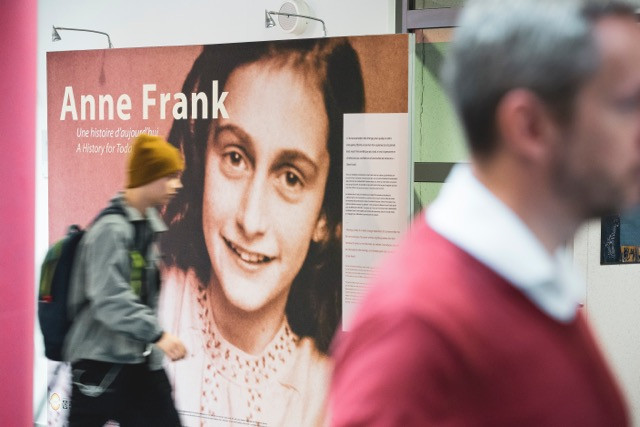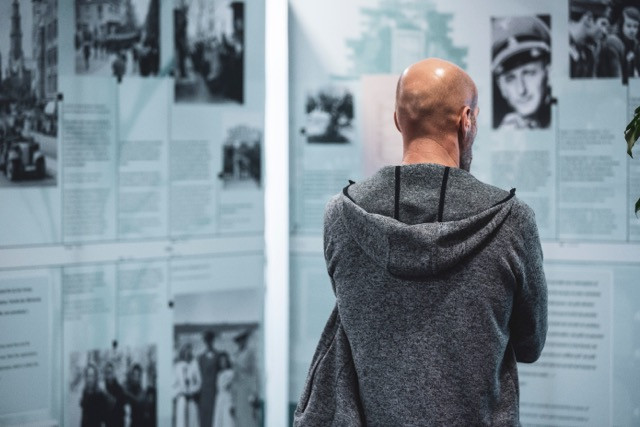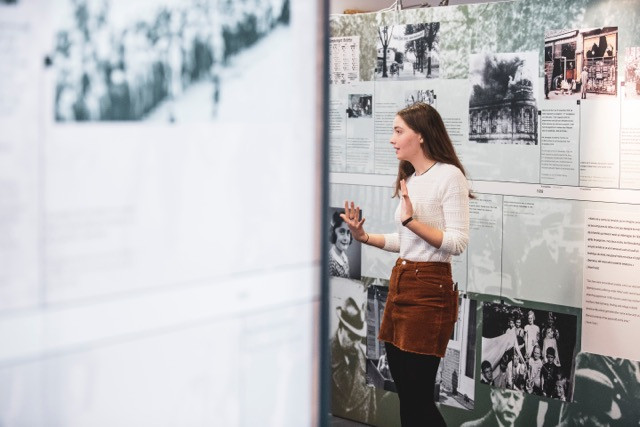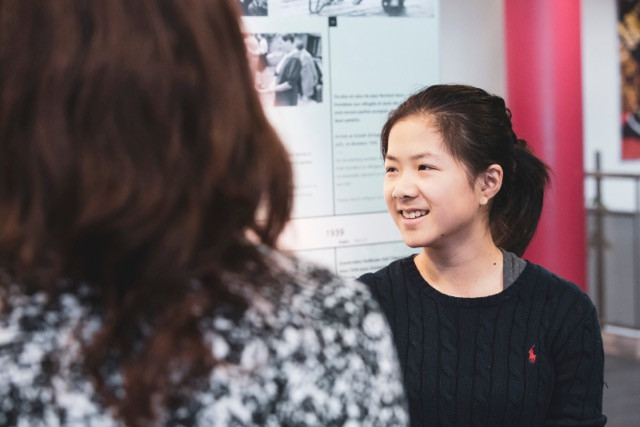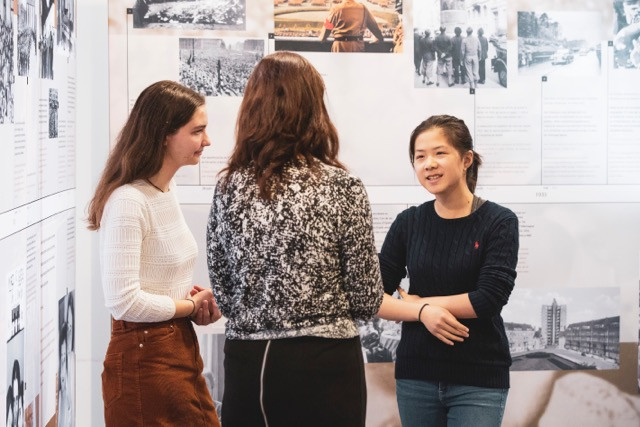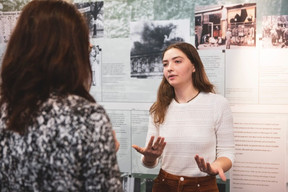“The Diary of Anne Frank” was penned while Anne, the eldest daughter of a German Jewish family, who hid from the Nazis in a house in Amsterdam for two years before they were found in 1944. While she, her sister and mother died in the Bergen-Belsen concentration camp, the family’s story is kept alive by the Anne Frank House, whose mobile exhibition, “A History for Today”, is spending a few weeks at the International School of Luxembourg thanks to the sponsorship of the Dutch embassy in Luxembourg.
Getting closer to history
“For me it was quite relatable,” Bulgarian student at the European School Diana Bimbalova told Delano on Monday afternoon, ahead of the exhibition opening. She is one of 15 volunteer student guides drawn from three schools, who underwent an intense, three-day training course to be able to take students from St George’s, the International School of Luxembourg, the European School and Lycée Aline Mayrisch and adults around the exhibition.
Bimbalova said she saw herself in Anne who faced similar difficulties teenage girls might have today and, like Bimbalova, was interested in writing. “Anne rewrote her diary to publish it one day. She knew she wanted to be a journalist or writer. That was important to her. In some way it’s nice to think it was fulfilled. She did become a famous author, technically, even if she wasn’t there to see it.”
The 16-year-old said the three-day training helped the volunteers better understand not only Anne, but the other people in her life: her family, those who hid her and the officers who arrested them.
“It really makes you feel closer to these people,” she said, adding that the training helped them apply this background to contemporary society. For example, among the activities they did was to list a typical teenager’s schedule today, then apply the Nazi laws on Jews from the time of WWII.
Discrimination today
The element of discrimination and its echoes in society today struck a chord with Saskia Frank, an ISL student and no relation of Anne Frank. “The recent political changes push this discrimination to the front page without people seeing the problem and how dangerous it is,” she says.
The 16-year-old’s mother, Fiona Godrey, has been a strident campaigner for the rights of British nationals in Luxembourg since the Brexit referendum in 2016 when she co-created British Immigrants Living in Luxembourg (Brill). “People forget the things they fought against. We need to continue this battle against discrimination,” she said, adding that it reinforced the need to “show young people they are important and can change how we do things.”
The exhibition led by the guides is far from being a bleak comment on man’s senseless destruction and cruelty. The student guides observe messages of strength and hope in Anne’s legacy.
For Frank, the core message is: “The fact that Anne Frank never lost hope that people were inherently good and people can change for the better. That’s what this exhibition is about.”
For Bimbalova the take away message was the sad but inspiring strength of Otto Frank who learned long after his release in January 1945 that he was the sole survivor of the family and those who hid in the house.
“I think it takes quite a lot, after all of that to have the strength to continue and then to read your dead daughter’s diary then to have it published,” she said. “Because he’s the only one who survived, it makes you wonder, would you rather survive after your family has died and continue or, would you rather have just not had to go through it?”
